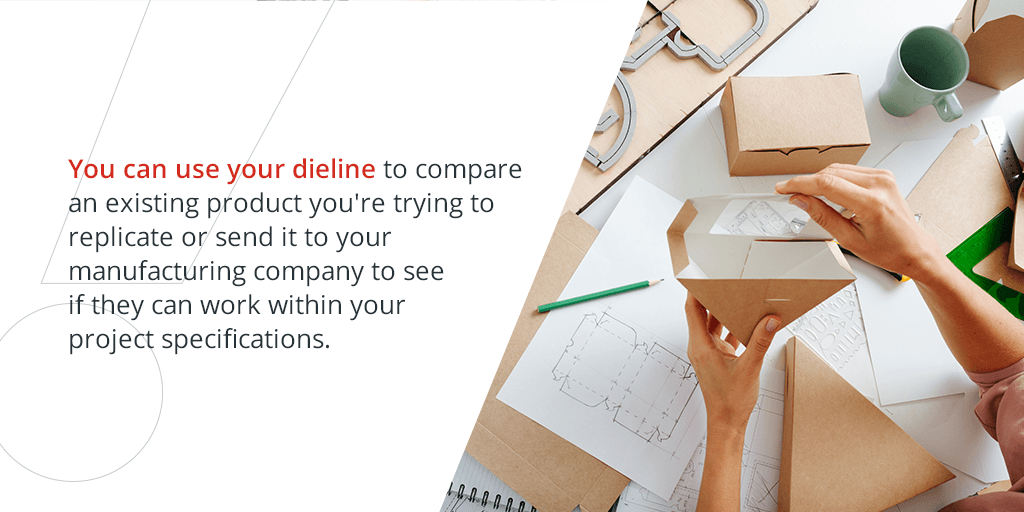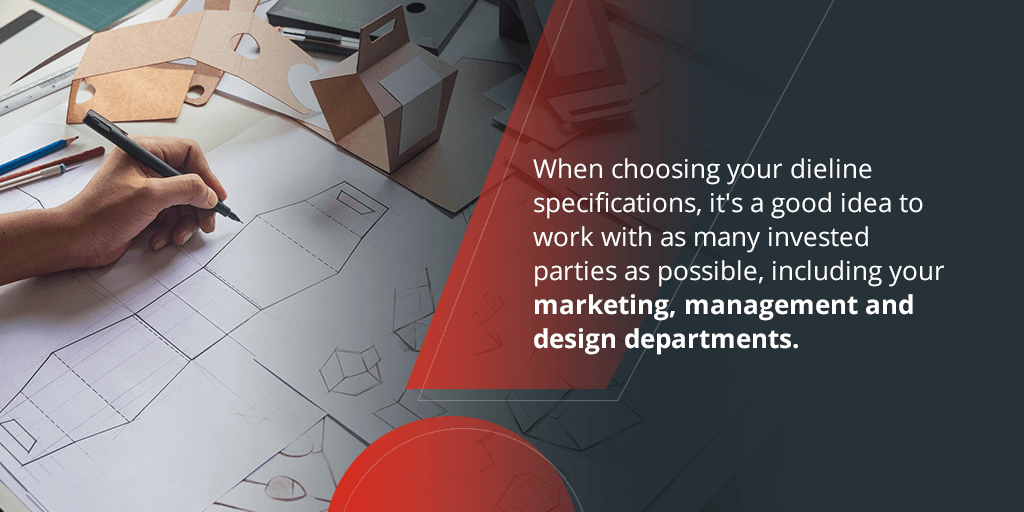
Creating attractive, effective packaging and shipping containers for your product is an intricate process. While you want to create a structurally sound, eye-catching design, it also has to meet all manufacturing and legal regulations before you can craft the final product. Dielines are an essential part of this process.
A dieline is a digital file that contains all relevant design notes, cut lines and markings for your brand’s box, envelope, sign, brochure or product packaging.

Any packaging, display or shipping container that has bends or folds requires a thorough dieline. Some businesses also rely on dielines for brochures, maps, three-dimensional advertisements and similar products. Dielines act like a blueprint or template because they let you visualize your final product and make necessary markings for cut lines, windows, graphics and more.
You can use your dieline to compare an existing product you’re trying to replicate or send it to your manufacturing company to see if they can work within your project specifications. Once the manufacturer receives it, their design department will take a closer look at it and note any adjustments they may require before sending it off for prototyping. A prototype is a finalized, three-dimensional version of your dieline — often smaller than the final product — that you can physically inspect and assess to make a final round of design changes.
Dielines let you do the following:
Not every box or packaging component requires a dieline for printing. Flat lays or simple designs with only straight cuts usually don’t. Custom Boxes Now will work with you to create a custom dieline for your artwork to ensure the perfect fit for box manufacturing.
Every dieline is different, depending on the final application, product, marketing decisions and industry. Each component on a dieline works together to create a map for the manufacturer, demonstrating where to cut lines and place folds. Some elements your dieline might include are:

When choosing your dieline specifications, it’s a good idea to work with as many invested parties as possible, including your marketing, management and design departments. You’ll also want to stay up-to-date on your manufacturer’s requirements and recommendations.
Dielines for packaging, boxes and other materials are either the business’s responsibility or are a provided service from your box manufacturer. If you’re responsible for creating your own dieline, you have two options:
Once the design is complete, you submit it to your manufacturer and wait for them to review it. Depending on the project and their in-house specifications, they may request adjustments so it’s as structurally sound as necessary. Once it’s ready for print, they will create a prototype and send it to you for review and approval. When you’re both in agreement and the product is in its final form, the manufacturer will begin printing your order.
If you’re not sure which elements you need for your dieline, consider the item’s final application and intended use. Is it a shipping container for your latest launch? If so, it needs to be durable and shaped in a way that’s easy to handle and store. If you’re creating unique packaging for a new product line, you’ll probably focus more on the visual appearance and how that plays a part in telling your brand’s story. If you’re designing a three-dimensional marketing product, like a standing display for a retail store, you must strike a balance between structural stability and appearance.
Your product’s final application will help you determine:
To begin, look at what other businesses in your industry are doing and consider what your target market has come to expect from a product like yours. You can also use an existing product you like and send it to your manufacturer or designer to create a similar dieline for your business.
When creating your dieline, don’t forget required elements, such as:
Consult industry standards and federal regulations for specific product requirements.

If you need shipping or product boxes for your business, Custom Boxes Now can help. We offer custom box orders for:
Contact us to learn more or build your custom box today!